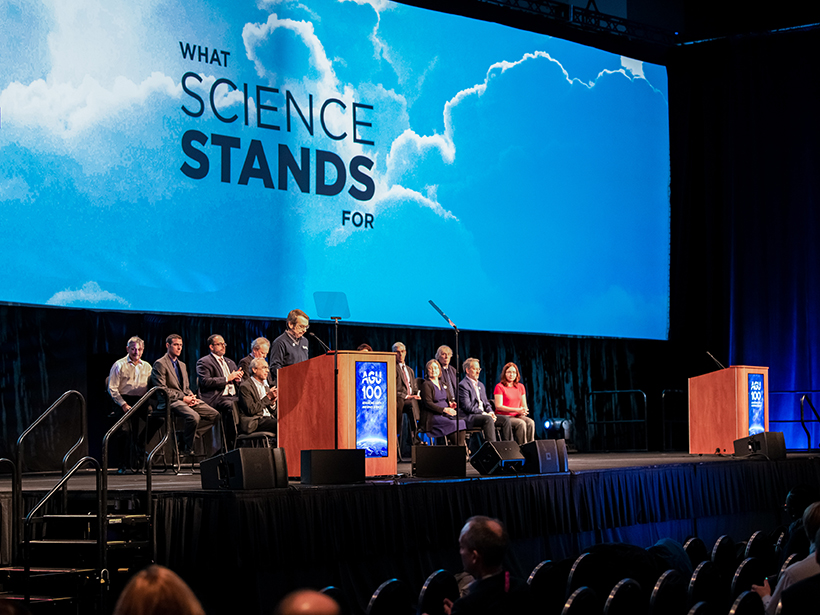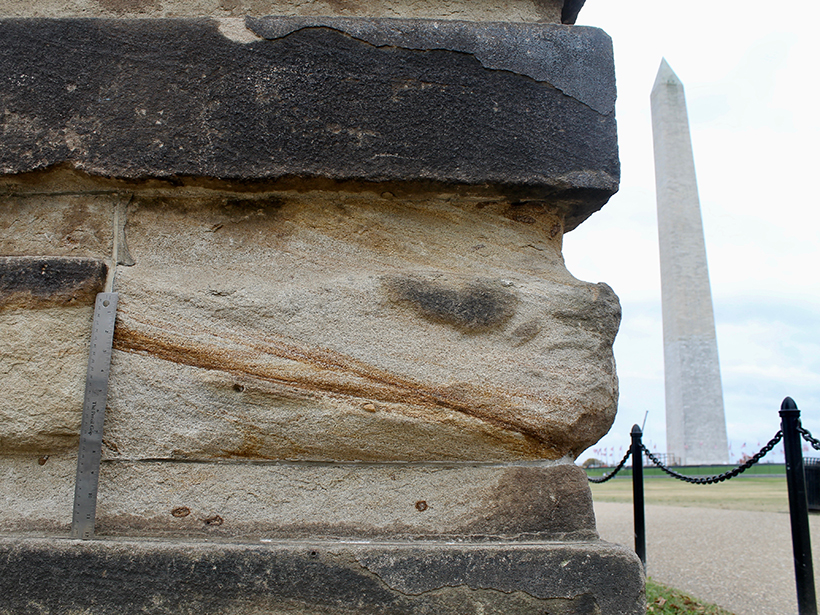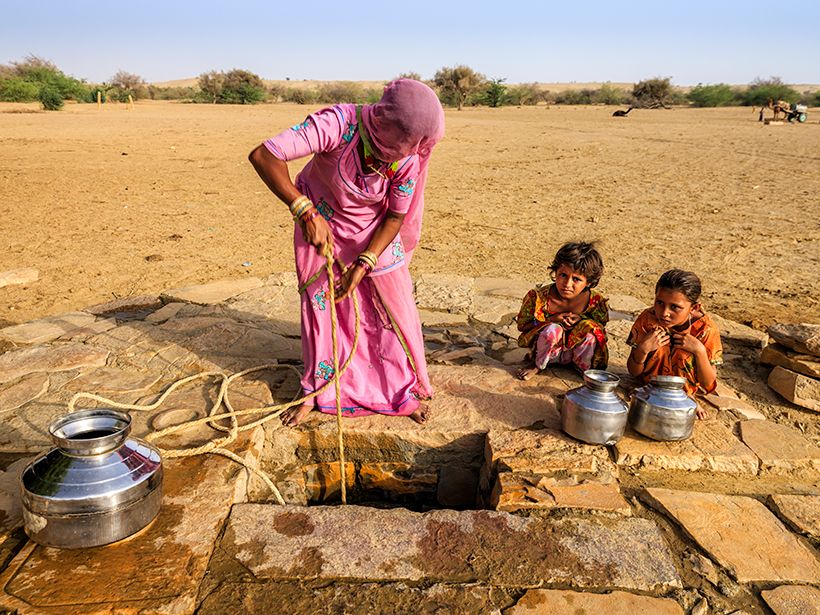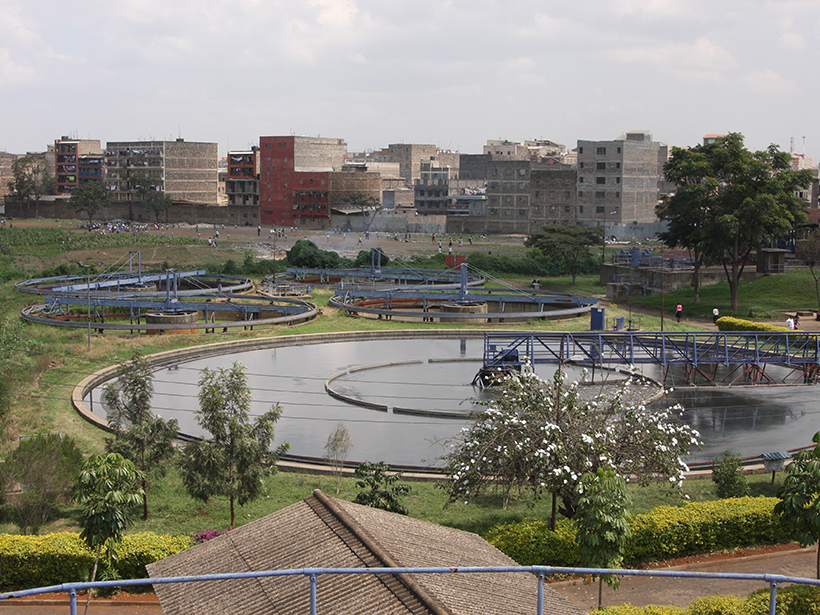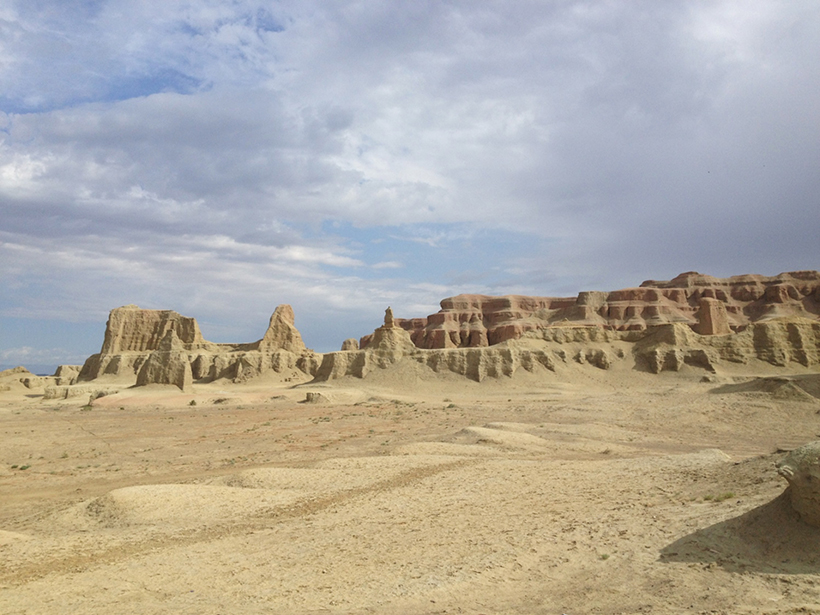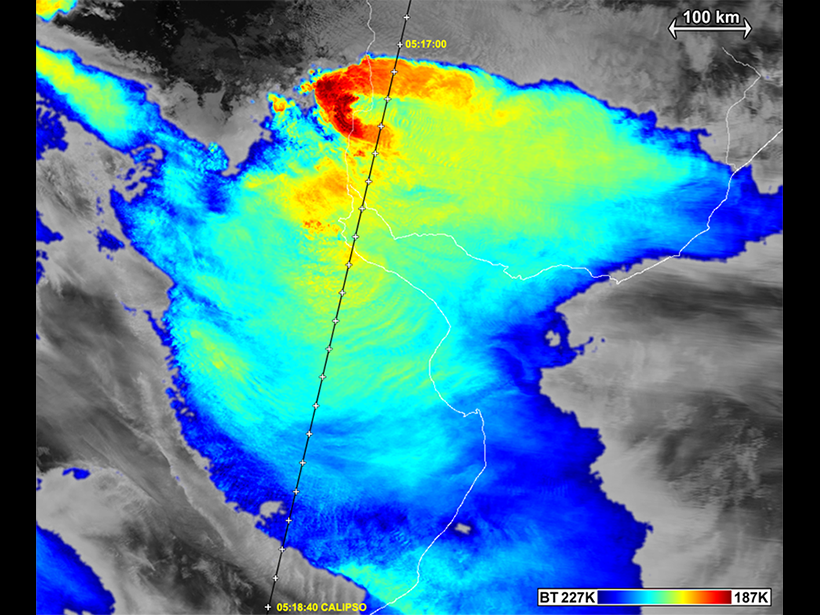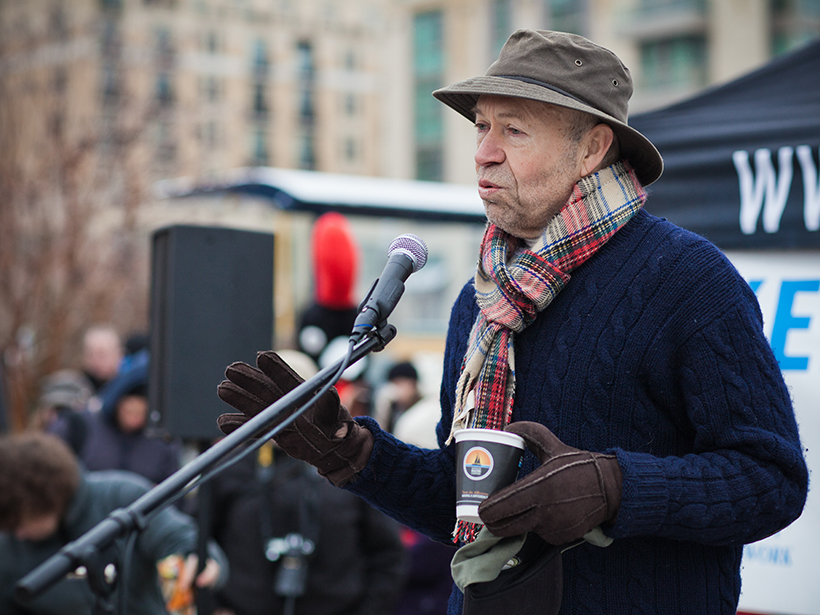A panel of scientists kicks off AGU’s Centennial by looking back on the groundbreaking achievements of the past century.
L. Strelich
Lily Strelich is a freelance writer and editor, covering Earth and space science research for Eos.org, Hakai Magazine, mental_floss, and others. She studied geology and German at Occidental College, assisted archaeology field work in Bulgaria, and now tackles science policy in Washington, D. C.
Self-Guided Tour of the Geology in D. C. Buildings
The architecture of the nation’s capital reveals a secret geologic history—take a walking tour to spot the interesting fossils and minerals in the stones used to build the halls of power.
A Closer Look at the Sustainability of Our Groundwater Aquifers
Researchers use a new approach to assessing the world’s largest aquifers in hopes of improving groundwater management during drought periods.
How Variations in Earth’s Orbit Triggered the Ice Ages
Researchers pinpoint how Milankovitch cycles have driven ice growth and influenced the timing of glacial periods.
Water Quality Database Offers New Tools to Study Aquatic Systems
Researchers assess the federal Water Quality Portal, a Web portal that unites disparate water quality data sets and resources.
Swirling Eddies in the Antarctic May Have Global Impacts
A new model examines how eddies in the Antarctic Circumpolar Current affect volume transport of the world's strongest current.
Water Subsidies May Not Be Going to Those Who Need Them Most
A new study finds a widely used water tariff does not effectively deliver subsidies to intended beneficiaries in Nairobi, Kenya.
Traces of Ancient Buried Subduction Zone Found in China
A combination of observations and modeling reveals evidence of a late Paleozoic intraoceanic subduction zone in the western Junggar region of northwest China.
When Thunderstorms Have Wings
A new study uncovers the origin of a gull wing–shaped cirrus cloud above an Argentinian thunderstorm captured in satellite images.
Scientist Credibility Unhurt by Climate Advocacy, Study Suggests
In a social science experiment, a fictitious meteorologist who advocates climate policy stances retains credibility among test subjects.

